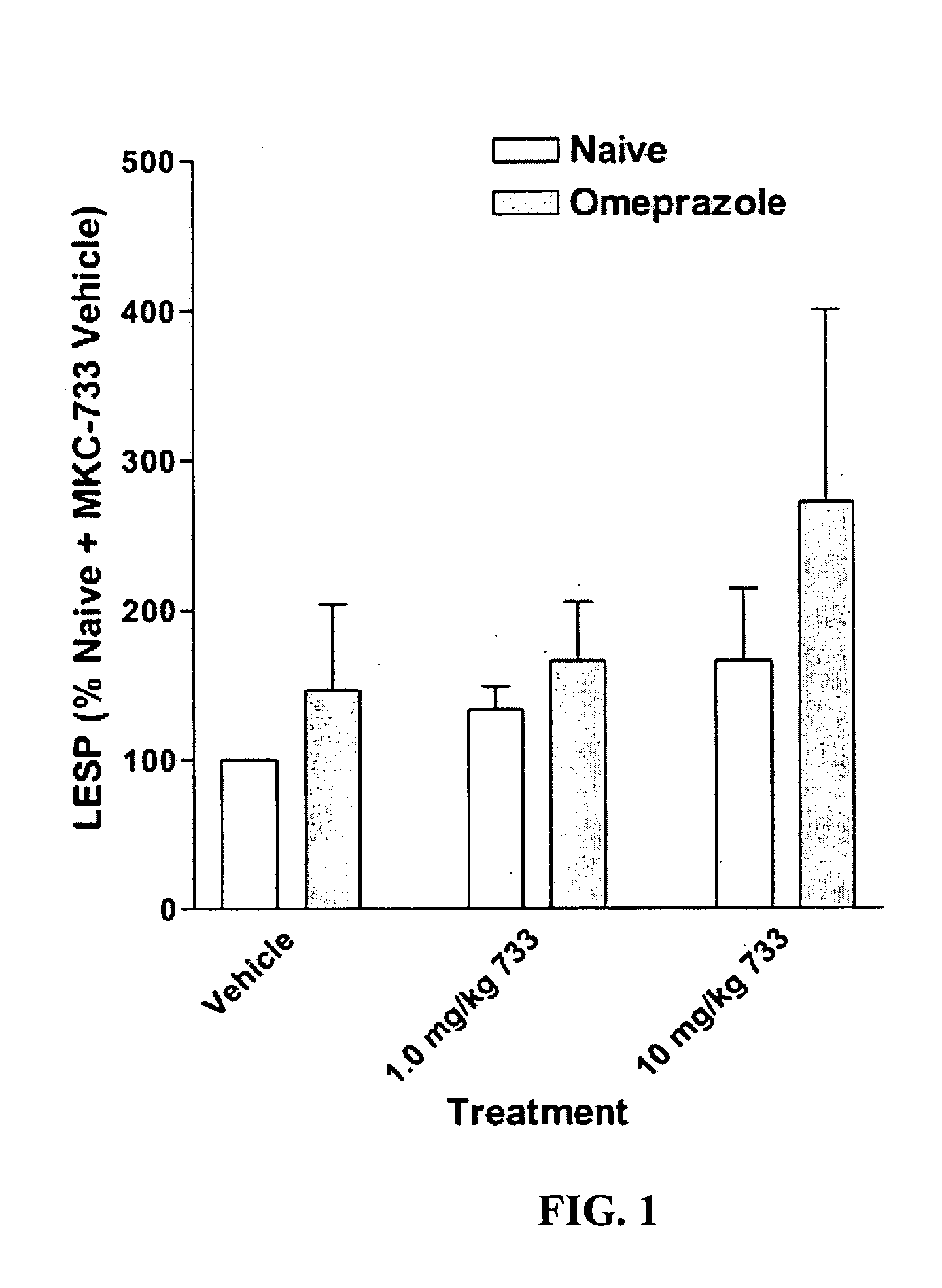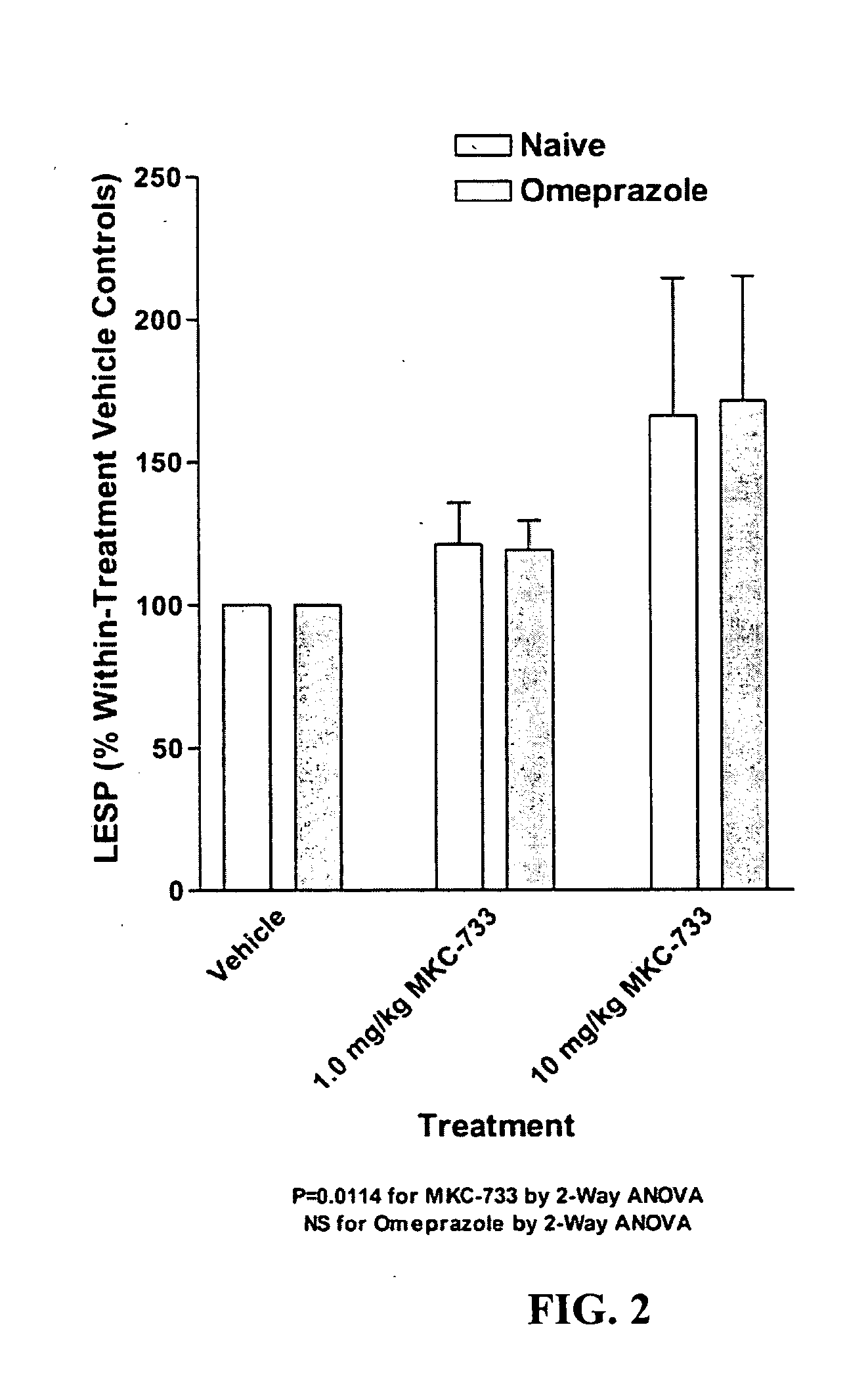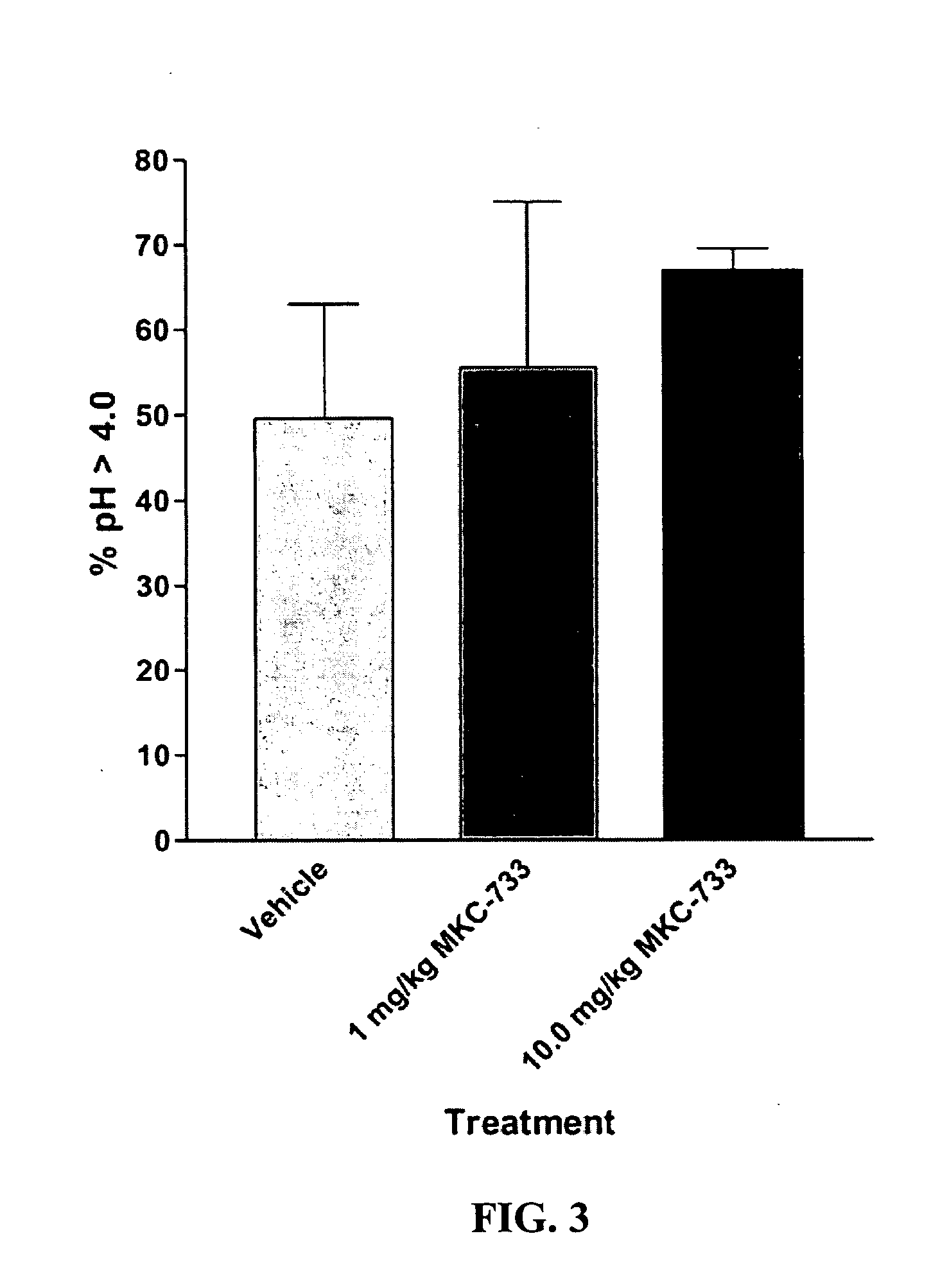Compositions useful for treating gastrointestinal motility disorders
a technology for gastrointestinal motility and compositions, applied in the field of compositions useful for treating gastrointestinal motility disorders, can solve the problems of nocturnal gerd, gerd more severe, gerd that can be particularly damaging to the pharynx and larynx, and increase the damage associated with nocturnal gerd, so as to achieve enhanced or synergistic therapeutic effects
- Summary
- Abstract
- Description
- Claims
- Application Information
AI Technical Summary
Benefits of technology
Problems solved by technology
Method used
Image
Examples
experiment 1
Following instrumentation, baseline values of LESP, esophageal pH, esophageal peristalsis and TLESR were measured as described above. Immediately following these physiological measurements, vehicle alone was given intravenously (30% polyethylene glycol in phosphate buffered saline). Physiological measurements were repeated during the 0-5 minutes post-injection period to determine vehicle effects, if any. Fifteen minutes later, 1.0 mg / kg MKC-733 in vehicle (same as above) was given intravenously and physiological measurements were again taken. Fifteen minutes later, 10 mg / kg MKC-733 in vehicle (same as above) was given intravenously and physiological measurements were again taken. The animals were then uninstrumented, allowed to recover from anesthesia, and returned to their cages.
experiment 2
After 3 days of recovery, the animals began a 4-day pretreatment with the PPI, omeprazole, at a dose of 20 mg / kg (propylene glycol vehicle) administered intraperitoneally (i.p.) once a day. The pretreatment ensured inhibition of the H+−K+ATPase of the gastric parietal cells. One hour after the last omeprazole injection, cats were again sedated and instrumented as described above and the dose-response for MKC-733 as described in its entirety for Experiment 1 was repeated.
Data is presented as mean ±SEM. LESP and Peristaltic Contraction Amplitude data were normalized to vehicle control values. Significance of LESP treatment effects within and between experiments was evaluated using 2-Way repeated measures ANOVA. In addition to nadir gastroesophageal reflux (GER) pH values (FIG. 4), pH data was also examined within a 2.5 minute duration (initiated at the start of the pH drop due to transient GER caused by spontaneous swallows or esophageal balloon distensions) and was...
PUM
| Property | Measurement | Unit |
|---|---|---|
| acid | aaaaa | aaaaa |
| gastric acid | aaaaa | aaaaa |
| pressure | aaaaa | aaaaa |
Abstract
Description
Claims
Application Information
 Login to View More
Login to View More - R&D
- Intellectual Property
- Life Sciences
- Materials
- Tech Scout
- Unparalleled Data Quality
- Higher Quality Content
- 60% Fewer Hallucinations
Browse by: Latest US Patents, China's latest patents, Technical Efficacy Thesaurus, Application Domain, Technology Topic, Popular Technical Reports.
© 2025 PatSnap. All rights reserved.Legal|Privacy policy|Modern Slavery Act Transparency Statement|Sitemap|About US| Contact US: help@patsnap.com



